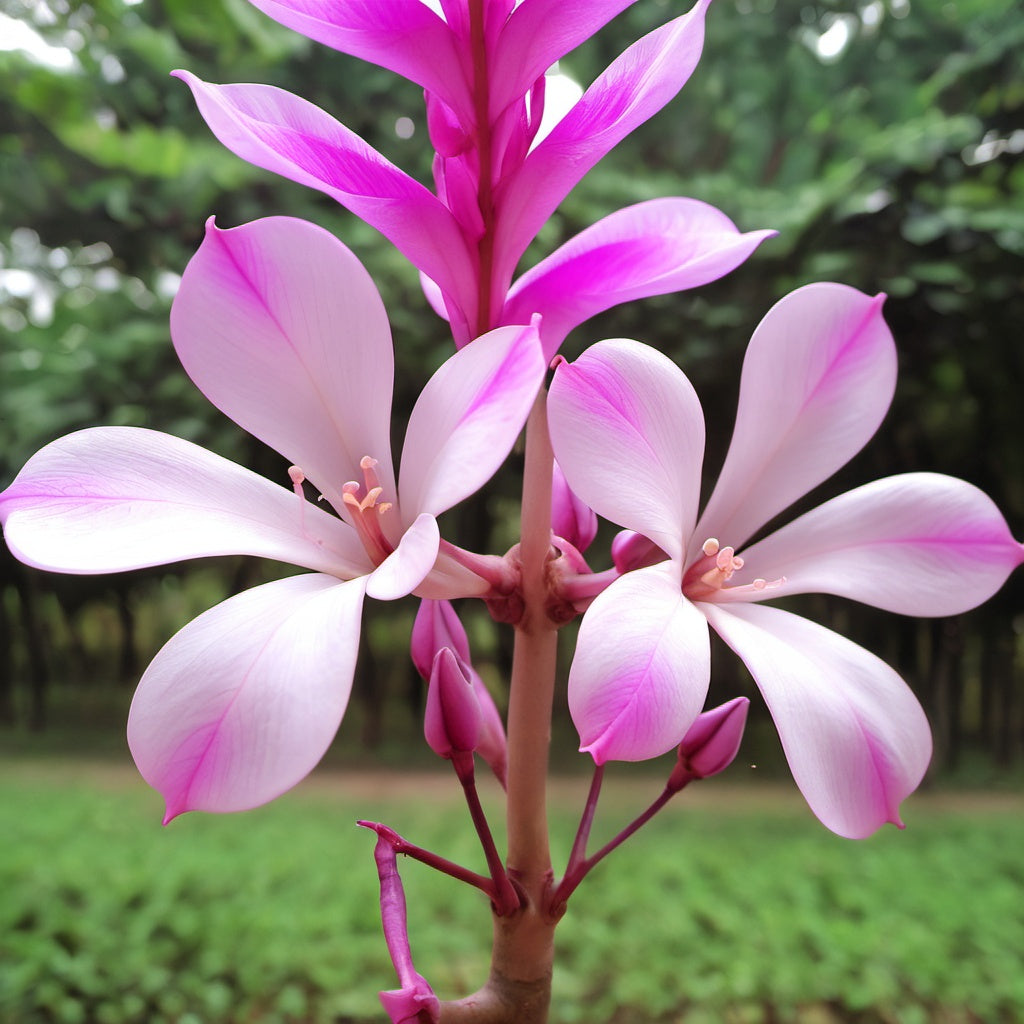Purple Orchid Tree Seeds
Purple Orchid Tree Seeds
Couldn't load pickup availability
Purple Orchid Tree Seeds
(Bauhinia purpurea)
Bauhinia purpurea, commonly known as the Purple Orchid tree or butterfly tree, is a deciduous flowering tree belonging to the Fabaceae family. It is native to Southeast Asia, particularly India, China, and other tropical regions. Here are key details about this species:
Description:
- Height: The tree grows to a height of 5–10 meters (16–33 feet).
- Leaves: The leaves are broad and bilobed, resembling a camel’s hoof, which gives rise to the alternative name "Camel’s Foot Tree."
- Flowers: The most distinctive feature is its bright purple to pinkish orchid-like flowers, which bloom in clusters. The flowers have five petals and typically appear from late summer to early winter, making the tree highly ornamental.
- Fruits: Bauhinia purpurea produces long, flat seed pods, which are typical of legumes.
Habitat and Growth:
- Climate: It thrives in warm, tropical, and subtropical climates.
- Sunlight: Prefers full sunlight but can tolerate some shade.
- Soil: Well-drained soils, though it can adapt to various soil types.
Uses:
- Ornamental Value: It is widely grown as an ornamental tree in gardens and streetscapes due to its attractive flowers.
- Medicinal Uses: In traditional medicine, parts of the tree (leaves, bark, and flowers) are used for treating conditions such as diarrhea, ulcers, and digestive disorders.
- Edible Uses: The young leaves and flowers are sometimes used in cooking in some cultures.
Cultural Significance:
In India and Southeast Asia, Bauhinia purpurea is sometimes associated with religious and cultural festivals due to its beauty and symbolic significance. It is also the official flower of Hong Kong.
Zones: 9 to 11
Stratification Requirement: Seed does not require a pre-treatment. Do not soak in water prior to planting.
Planting Instructions:
Before planting, it’s crucial to prepare the seeds by scarifying them—this involves lightly nicking or sanding the seed coat to help water penetrate and enhance germination.
Next, prepare the planting area or containers by ensuring that the soil is well-drained and rich in organic matter. Bauhinia purpurea trees prefer slightly acidic to neutral soil. If planting in containers, choose pots with adequate drainage holes. Fill the containers with a well-draining seed starting mix or a sandy-loam blend.
Sow the seeds about 1 to 2 inches deep in the soil, spacing them several inches apart if planting in the ground. Water the soil gently to keep it moist, but avoid waterlogging. Place the containers or planting site in a location that gets full sunlight or partial shade, as these trees thrive in bright conditions.
Germination typically occurs within 2 to 3 weeks, but it may take a little longer depending on environmental conditions. During this period, maintain consistent moisture, but ensure the soil doesn’t become too wet. Once the seedlings have developed a few sets of leaves and are strong enough, you can transplant them to their permanent outdoor location if they were started indoors.
The tree will grow relatively fast, and you can expect it to reach maturity in a few years, blooming with striking purple flowers. Regular watering and occasional feeding during the growing season will help ensure vigorous growth.


